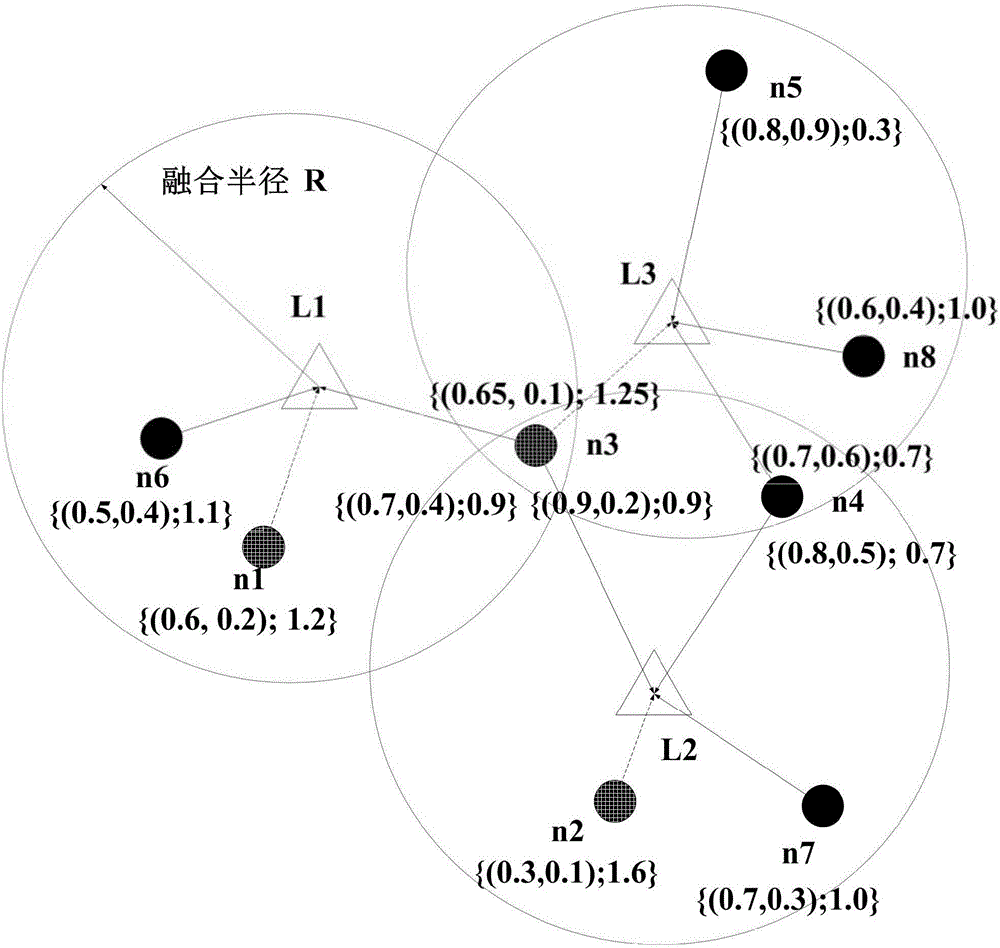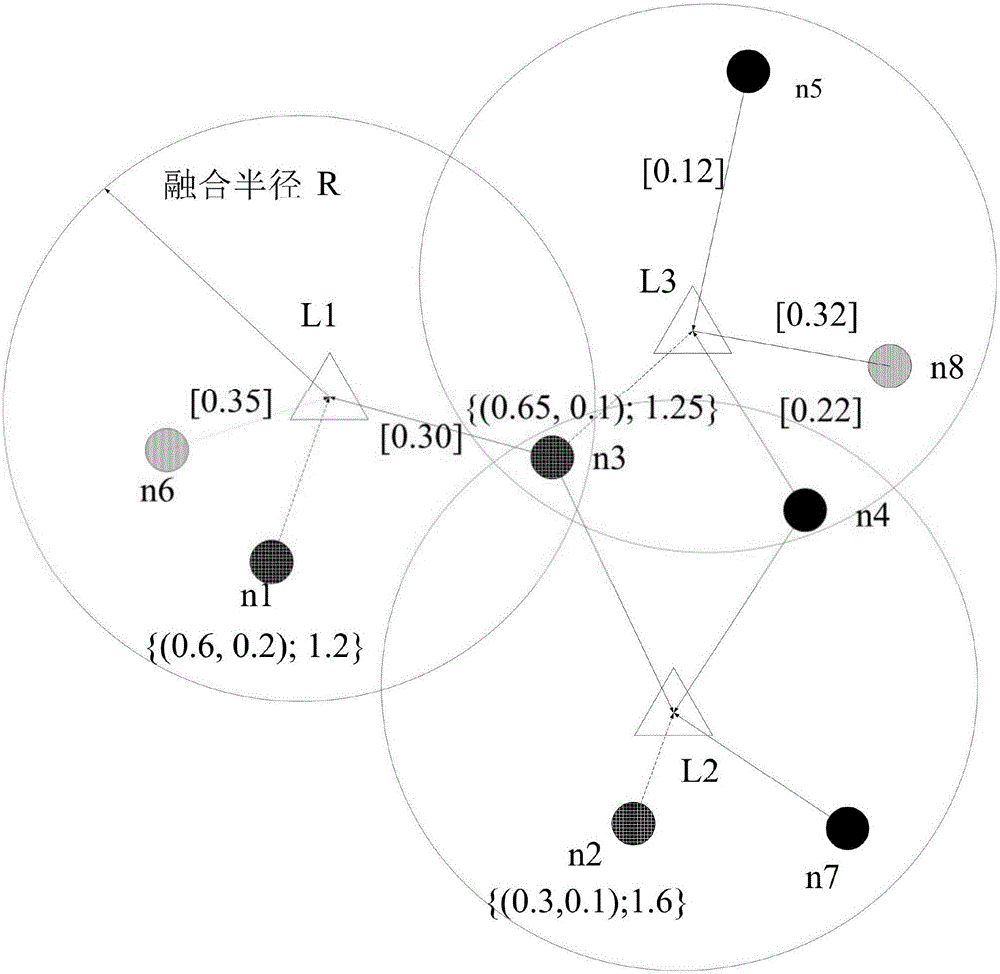Distributed sensor cooperation selecting method
A distributed sensor and sensor technology, applied in the field of measurement and control, can solve problems such as low accuracy, poor effect, and comprehensive consideration of sensor networks.
- Summary
- Abstract
- Description
- Claims
- Application Information
AI Technical Summary
Problems solved by technology
Method used
Image
Examples
Embodiment Construction
[0043] Such as figure 1 Shown is the flow chart of the method of the present invention: the distributed sensor collaborative selection method provided by the present invention includes the following steps:
[0044] S1. Randomly deploy a large number of cheap sensor nodes in the monitoring area, and group them according to the fusion radius of the monitoring points;
[0045] The fusion radius can be taken as twice the communication radius of the sensor node;
[0046] S2. Calculate the distance between the sensor node and the target after normalization;
[0047] Calculate the normalized distance between the sensor node and the target using the following formula:
[0048] dS(s i )=p(x|d i ,SNR i )×p(d i ,SNR i )
[0049] Among them, p(x|d i ,SNR i ) is the conditional probability that can be obtained from empirical data, p(d i ,SNR i ) is the target at radius d i The probability of occurrence of the area range, its value is estimated experimentally based on empirical...
PUM
 Login to View More
Login to View More Abstract
Description
Claims
Application Information
 Login to View More
Login to View More - R&D
- Intellectual Property
- Life Sciences
- Materials
- Tech Scout
- Unparalleled Data Quality
- Higher Quality Content
- 60% Fewer Hallucinations
Browse by: Latest US Patents, China's latest patents, Technical Efficacy Thesaurus, Application Domain, Technology Topic, Popular Technical Reports.
© 2025 PatSnap. All rights reserved.Legal|Privacy policy|Modern Slavery Act Transparency Statement|Sitemap|About US| Contact US: help@patsnap.com



